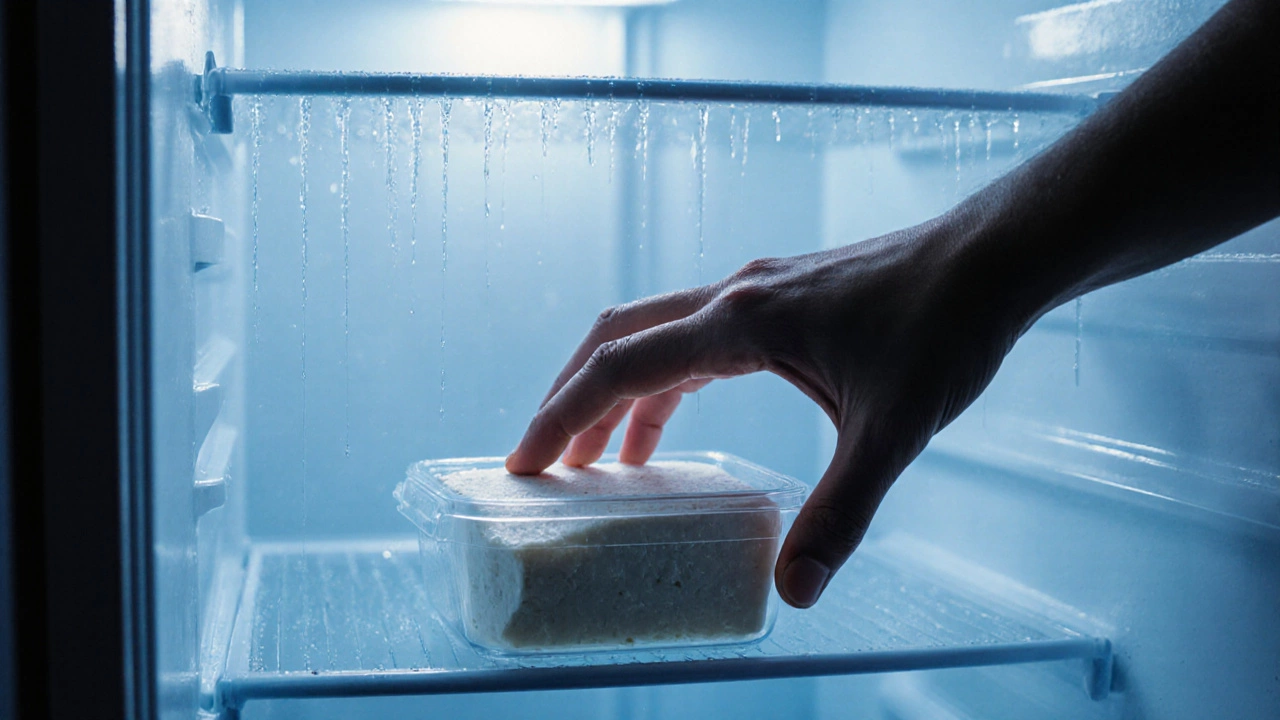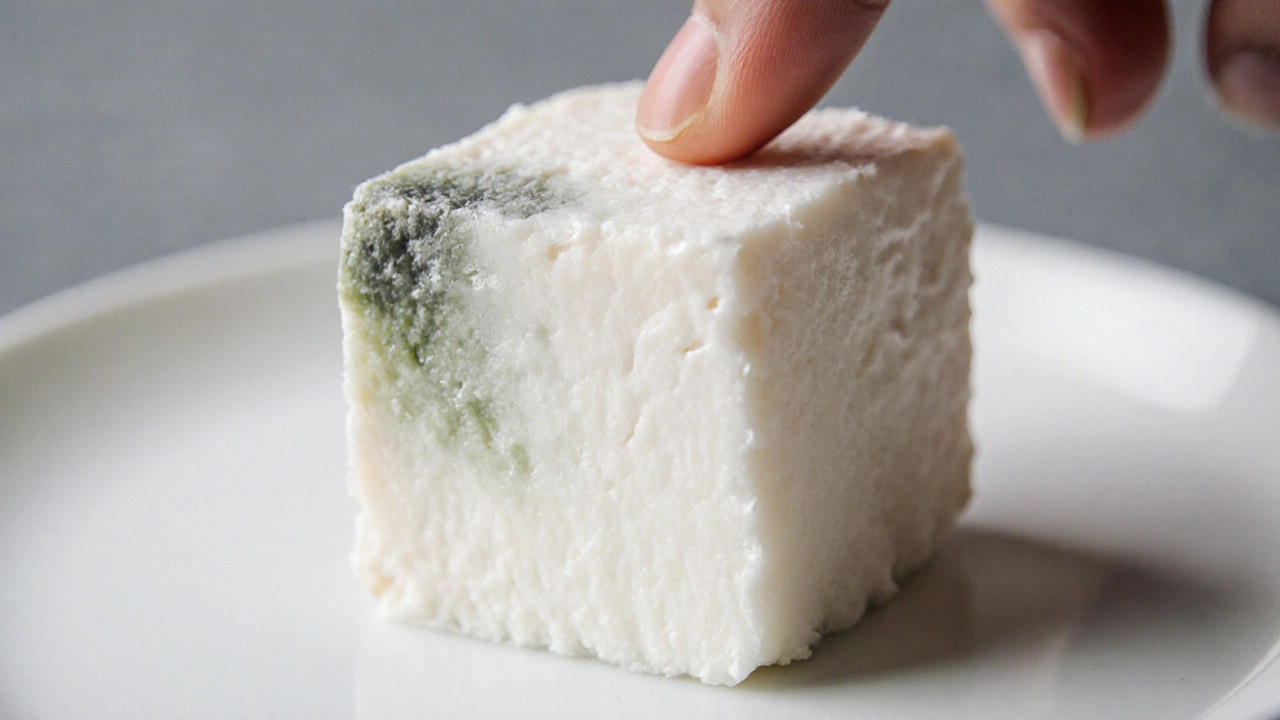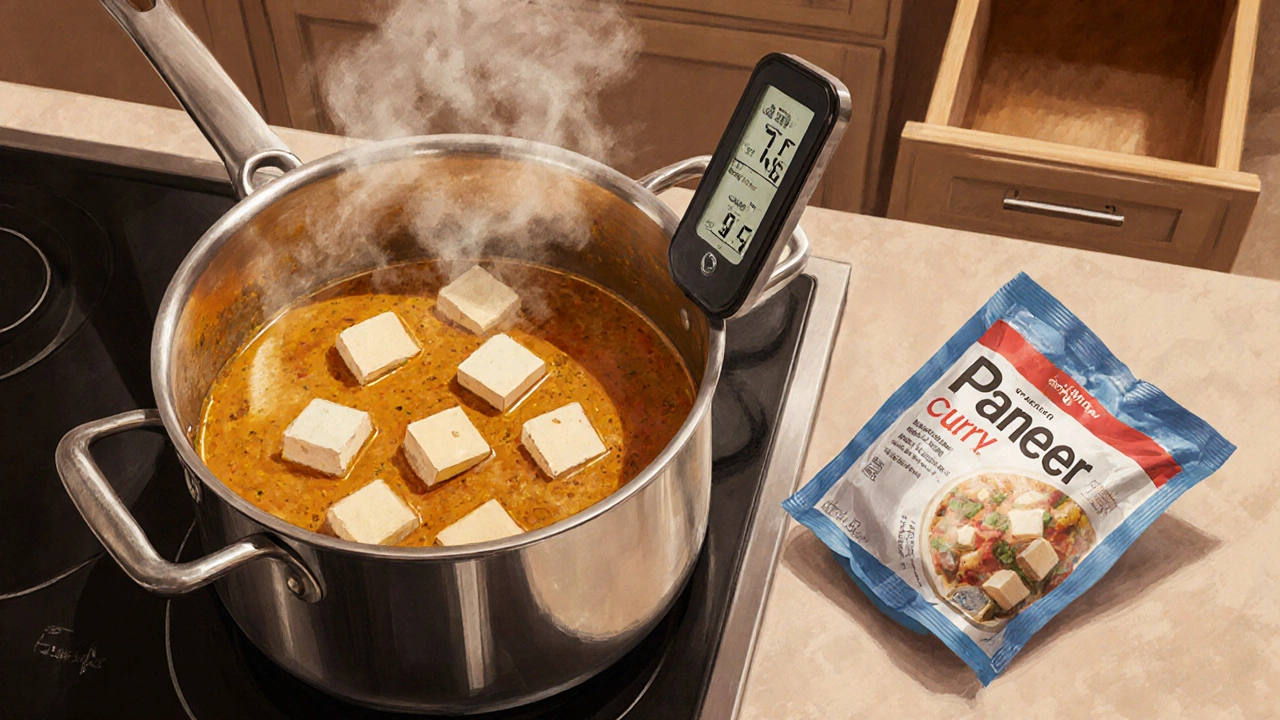Can I Eat 7‑Day‑Old Paneer? Safety, Signs, and Tips
 Oct, 15 2025
Oct, 15 2025
Paneer Safety Checker
Check if your paneer is safe to eat based on storage conditions and sensory observations. Remember: when in doubt, throw it out!
When you open the fridge and spot a block of homemade paneer that’s been there for a week, the first thought is usually, “Is it still safe?” The answer isn’t a simple yes or no-it depends on how the paneer was stored, the temperature it saw, and the signs it shows. Below you’ll find a quick rundown, followed by a step‑by‑step guide to decide whether that 7‑day‑old paneer can still hit your plate.
Key Takeaways
- If paneer has been kept at ≤4°C (39°F) in an airtight container, it can stay safe for up to 5-7 days.
- Visible mold, sour smell, or a slimy surface means it’s time to toss it.
- Freezing paneer within 2‑3 days extends its life to 2‑3 months without quality loss.
- Cooked dishes that include old paneer (e.g., curries) are safer if the paneer is heated to ≥74°C (165°F) before serving.
- When in doubt, discard - food‑borne illness risks outweigh a wasted block.
Homemade paneer is essentially fresh cheese made by coagulating milk a source of lactose, proteins, and fats used as the base for paneer. The curd is pressed, rinsed, and cut into cubes. Because it contains high moisture and no preservatives, it’s prone to bacterial growth the moment it cools.
Why Paneer Spoils Quickly
Fresh paneer is a high‑water, neutral‑pH food. Bacteria such as listeria a gram‑positive bacterium that can multiply at refrigerator temperatures and salmonella a common food‑borne pathogen that thrives in warm, moist environments can start multiplying within hours if the paneer isn’t kept cold enough. The lack of a protective rind (unlike hard cheeses) means spoilage microbes have direct access to the interior.
Factors That Impact Shelf Life
- Temperature: refrigeration maintaining a consistent 0‑4°C environment slows bacterial growth dramatically. Every degree above 4°C cuts the safe window roughly in half.
- Packaging: Airtight containers limit oxygen, slowing aerobic spoilage. Vacuum‑sealed bags are even better.
- Moisture loss: If paneer sits in its own whey, it stays softer but also provides a perfect medium for microbes.
- Initial hygiene: Clean utensils and boiled milk reduce the initial bacterial load.
How to Spot Bad Paneer
Use your senses-no need for a lab test.
- Smell: A sour, ammonia‑like, or rancid odor signals spoilage.
- Texture: Slimy, excessively watery, or crumbly pieces indicate microbial activity.
- Color: Any grayish, greenish, or bluish patches are mold growth. Even small spots should be treated as a sign to discard.
- Taste (if you’re brave): A sharp, off‑flavor is the final confirmation-though you shouldn’t taste if other signs are present.

Is 7‑Day‑Old Paneer Still Edible?
The short answer: paneer shelf life can stretch to 7 days only when three conditions are met:
- It’s been stored at ≤4°C without temperature fluctuations.
- It’s kept in a sealed container, preferably with the excess whey drained.
- No off‑smell, slimy texture, or visible mold is present.
If any of those checkpoints fail, the paneer should be tossed. Even if it looks fine, the hidden risk of food poisoning illness caused by ingesting harmful bacteria or toxins in food rises sharply after a week.
Extending Paneer’s Life: Practical Tips
- Drain and dry: After pressing, pat the paneer with a clean cloth to remove excess whey.
- Store in water: Some cooks keep paneer submerged in cold, salted water inside a sealed jar-this keeps it moist and adds a slight barrier to microbes.
- Vacuum‑seal: Using a home vacuum system removes oxygen, extending freshness to 10‑12 days.
- For those without a machine, zip‑lock bags with as much air pushed out as possible work reasonably well.
- Freeze for long‑term: Cut paneer into cubes, flash‑freeze on a tray, then transfer to a freezer bag. It stays good for 2-3 months. Thaw in the refrigerator before use.
- Cook immediately: If you plan to use paneer in a curry or bhurji, cooking it to an internal temperature of ≥74°C (165°F) kills most bacteria, making slightly older paneer safer.
Quick Comparison: Fresh vs. 7‑Day Paneer
| Aspect | Fresh (0‑2 days) | 7‑Day (if stored properly) |
|---|---|---|
| Texture | Soft, springy | May become slightly drier, but still firm if no water loss |
| Smell | Mild dairy aroma | Neutral to mildly sour - any strong odor = discard |
| Visible mold | None | None expected; any spots = unsafe |
| Recommended use | All dishes, raw salads, desserts | Cooked dishes (curries, grilled) after heating to 74°C |
| Storage tip | Airtight container, 0‑4°C | Same + consider vacuum‑seal or freeze if beyond 5 days |

Regulatory Guidance
Both the USDA U.S. Department of Agriculture, which provides guidelines for dairy safety and the Indian FSSAI Food Safety and Standards Authority of India, the regulatory body for food safety in India recommend a 3‑day fridge life for fresh, unpasteurized cheese. Homemade paneer, often made from boiled (pasteurized) milk, can stretch to 5‑7 days under ideal refrigeration, but the safe recommendation remains conservative to avoid risk.
What to Do If You’ve Already Consumed Old Paneer
Watch for symptoms within 6‑48hours: nausea, vomiting, abdominal cramps, diarrhea, or fever. Most mild cases resolve with hydration. If you experience severe vomiting, blood in stool, or fever above 38°C, seek medical care promptly.
Bottom Line
Keep a close eye on temperature, packaging, and sensory cues. If your 7‑day paneer passes those checks, cooking it thoroughly makes it safe for most meals. When in doubt, throw it out-your stomach will thank you.
Frequently Asked Questions
Can I eat paneer that’s been in the fridge for a week?
Only if it has been stored at ≤4°C in an airtight container, shows no sour smell, slime, or mold, and you heat it to at least 74°C before serving.
What are the first signs that paneer has gone bad?
A bitter or sour odor, a sticky or slimy texture, and any discoloration such as gray, green, or blue spots are clear indicators that the paneer should be discarded.
How long can I freeze homemade paneer?
If you freeze paneer within 2‑3 days of making it, it stays good for 2‑3months. Thaw it in the fridge before using.
Is it safe to eat paneer raw after a week?
Raw consumption after 7 days is risky because harmful bacteria can survive even at refrigeration temperatures. It’s safer to cook it thoroughly.
What temperature should my fridge be for storing paneer?
Keep the fridge at or below 4°C (39°F). Every degree higher speeds up bacterial growth and shortens paneer’s safe shelf life.